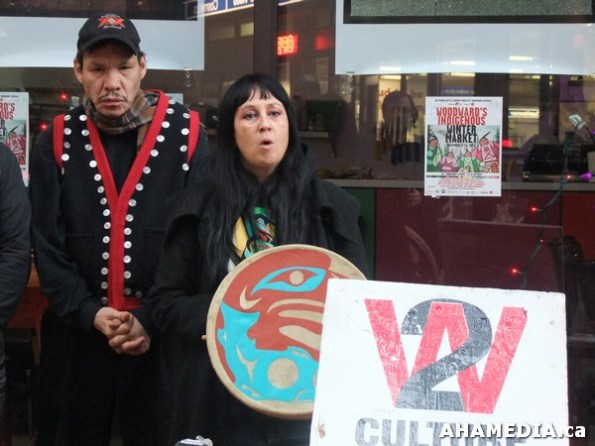Change the conversation, support rabble.ca today.
I don’t know what’s going on lately in Vancouver.
It seems that whatever sliver of creative arts and cultural spaces artists and community members manage to sustain eventually falls victim to big business, developers and the City.
It’s the W2 centre in the Woodward’s building and Waldorf Hotel evictions that are on the docket as of late. And artists and media activists are outraged, rightfully so. But beneath the surface of various spaces trying to make ends meet, there is a pattern of gentrification assailed upon areas often already gentrified.
Culture and condos
As a recent piece in the Mainlander piece makes clear, the Waldorf is not the first and only site of affluent development in the area. In fact, the Waldorf itself could be seen as a symbol of cultural gentrification in its low-income neighbourhood:
“In addition to being a successful space on its own terms, the Waldorf was explicitly viewed as an institution capable of drawing a more affluent demographic to the east of the Downtown Eastside, home to some of Vancouver’s lowest income housing and artist space.”
It’s true that it can work this way. Hip joints pop up in areas facing rampant and posh development, contributing unseen impacts on the existing residents of the neighbourhood. But of course, people need a space to go to that captures the spirit and festivity of local arts and culture projects, or to host various political events. To many people the Waldorf was answering this call.
On top of losing the Waldorf, there’s the recent eviction of the W2 Community Arts Centre in the Woodward’s Heritage Building in Vancouver’s Downtown Eastside. (Full disclosure, rabble.ca, as a sub-tenant of W2, is currently facing eviction from W2.) With so many local organizations, individuals and art projects forced to relocate indefinitely from the building, people are wondering what spaces we have left.
Legacy of the Woodward’s Squat
Scott Clark, spokesperson for W2 user group The Aboriginal Life in Vancouver Enhancement Society (ALIVE), stated that the model of spaces like the W2 is something to be reconsidered, especially when forced to pay an unaffordable $85,000/year amenities fee.
Clark, who is still working to have the centre fully re-opened, argues that W2 itself should be seen as the amenity. He explains that the “legacy of the Woodward’s squat,” specifically around Indigenous leadership, is still carrying on through the many organizations and individuals converging to come up with a plan to take back the space and reintroduce it to the city.
It’s important to note the difference between spaces collectively run by community members for the good of organizing in the community, and spaces run for the purposes of carrying out arts and culture because they are somehow deemed profitable to whatever corporate and neo-liberal whims there may be at play.
Michael Stewart, writing earlier in rabble.ca, highlighted the inherent issue with arts owned by capital and making transactions through this framework: “We need to choose culture over condos, that doesn’t mean collaborating with developers for the price of a Tiki bar. It means declaring as artists and residents that the positive vision of this city collectively produced is not for sale and won’t be.”
Art for capital’s sake doesn’t do justice to the human process of exploring and expressing creativity. And, as a community, we should have the power to reclaim space to organize around local issues, while providing a place for artists and community members to collaborate.
Preserving radical spaces
This is why it is so crucial to preserve and create radical and alternative spaces, which the residents and users themselves can maintain. And this is why it’s crucial to have these spaces operate outside the capitalist model of what’s marketable, serving unique local needs instead.
Alexander Daughtry at Spartacus Books, a local collectively run anarchist bookstore, says that places like Spartacus “are a refuge from corporate control of our lives and venues to organize resistance.” For Daughtry, the recent evictions “illustrate how vulnerable our carved out spaces are, controlled by this profiteering economic culture that doesn’t see or care about the value created in those spaces.”

Spartacus itself has dealt with struggles making ends meet and having to relocate multiple times, but, with the help of the radical community, it has managed to stay alive for 40 years. This commitment and perserverance has led me to volunteer there.
At the end of the day, we need places to go, places where we can celebrate the beauty of the arts and meet with each other to organize around activist causes — in what we try to make safe, non-oppressive spaces.
If, in whatever small attempts the large developers, business owners and the City attempt to assuage our concerns, we do not find the true cultural spaces that we need, then it is imperative that we get together and make our own. That is one lesson we can take from these tumultuous times for the arts in Vancouver.
Tania Ehret is a contributing editor with rabble.ca
Photo: http://ahamedia.ca/



